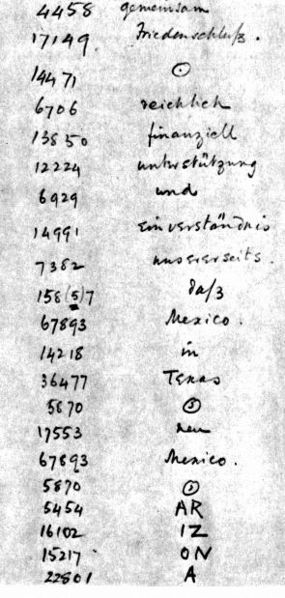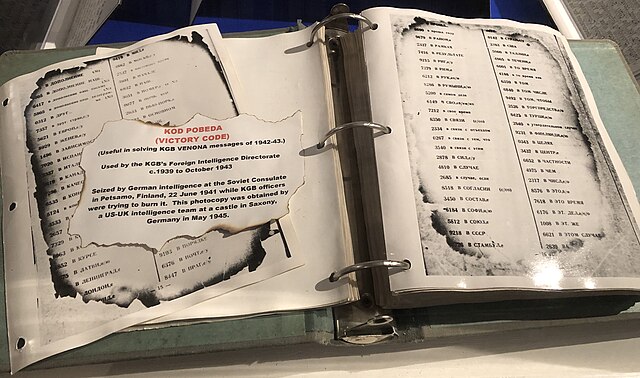Trench codes were codes used for secrecy by field armies in World War I. Messages by field telephone, radio and carrier pigeons could be intercepted, hence the need for tactical World War I cryptography. Originally, the most commonly used codes were simple substitution codes, but due to the relative vulnerability of the classical cipher, trench codes came into existence. The use of these codes required the distribution of codebooks to military personnel, which proved to be a security liability since these books could be stolen by enemy forces.
Image: Seneca code cover.agr
Image: Seneca code instructions.agr
Image: Seneca code encoding.agr
Image: Seneca code decoding sample.agr
In cryptology, a code is a method used to encrypt a message that operates at the level of meaning; that is, words or phrases are converted into something else. A code might transform "change" into "CVGDK" or "cocktail lounge". The U.S. National Security Agency defined a code as "A substitution cryptosystem in which the plaintext elements are primarily words, phrases, or sentences, and the code equivalents typically consist of letters or digits in otherwise meaningless combinations of identical length." A codebook is needed to encrypt, and decrypt the phrases or words.
A portion of the "Zimmermann Telegram" as decrypted by British Naval Intelligence codebreakers. The word Arizona was not in the German codebook and had therefore to be split into phonetic syllables.
Partially burnt pages from a World War II Soviet KGB two-part codebook






